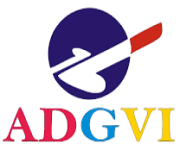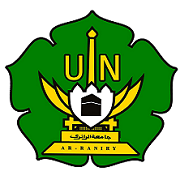Peningkatan Hasil Belajar Peserta Didik Dengan Model Pembelajaran Snowball Throwing Pada Pembelajaran Dasar Telekomunikasi
Abstract
Based on the previous observations at SMKN 5 Telkom Banda Aceh on Basic Telecommunication subject, it presented that most students still lack of enthusiasm and interest in learning. They prefer did another in the class other than study. This problems faced the students in the classroom atmosphere noisy and disrupted learning activities. This has an impact on the students’value or score which got bad and down. The purpose of this study was to determine the learning outcomes of students and their responses to the application of the Snowball Throwig learning model in basic telecommunication learning at SMKN 5 Telkom Banda Aceh. This study uses a quasi-experimental design with one group pretest and posttest. By using test sheets and questionnaires, this research was carried out using quantitative data analysis techniques. The results showed that the learning outcomes of students increased significantly with the average pretest score of 28.50 increasing to the posttest average value of 71.00. So it can be concluded that there is an increase in student learning outcomes in Basic Telecommunication learning at SMKN 5 Telkom Banda Aceh with the application of the Snowball Throwing learning model. In addition to learning outcomes, student response data is good. This is evidenced by looking at the student's response to the positive statement of the questionnaire on average above 75%. It can be concluded that the application of the snowball throwing learning model is able to improve student learning outcomes and attract students' interest in learning.
Keywords
Full Text:
PDFReferences
Anggrayani, T, D. (2012). Penerapan Strategi Pembelajaran Aktif Tipe Snowball Throwing Pokok Bahasan Usaha dan Energi Siswa Kelas VIII Semester I Di SMP Negeri 6 Palangka Raya Tahun Ajaran 2012/2013.
Aziz, F., dkk. (2017). Aktualisasi TTB (TEORI TAKSONOMI BLOOM) Melalui Drama Kepahlawanan Guna Penanaman Pendidikan Karakter Pada Peserta Didik, PS PBSI FKIP Universitas Jember. Seminar Nasional.
A.Tabrani Rusyan, dkk. (1994). Pendekatan dalam Proses Belajar Mengajar, Bandung: Remaja Karya
Bertan, C. V. (2016). Pengaruh Pendayagunaan Sumber Daya Manusia (Tenaga Kerja) Terhadap Hasil Pekerjaan (Studi Kasus Perumahan Taman Mapanget Raya (TAMARA). Jurnal Sipil Statik, 4(1),
Budyartati. (2014). Problematika Pembelajaran di Sekolah Dasar, Yogyakarta: Deepublish
Darmadi, H. (2017). Pengembangan model metode pembelajaran dalam dinamika belajar sisw. Yogyakarta: deepublish
Fathurrohman, M. (2015). Model-Model Pembelajaran Inovatif, Jogjakarta: Ar-Ruzz Media
Gustomo, A., Sudarman. (2015). Penerapan Model Pembelajaran Snowball Throwing Untuk Meningkatkan Hasil Belajar Siswa Pada Kompetensi Memperbaiki Unit Kopling Dan Komponen- Komponen Sistem Pengoperasian. Jurnal Pendidikan Teknik Mesin, 15(2),
Gani, I. (2015). Alat Analisis Data, Yogyakarta: Andi Offset
Kokom, K. (2013). Pembelajaran Kontekstual: Konsep dan Aplikasi. Bandung: PT Refika Adiatama
Kusmaryanto, S. (2014). Konsep Fundamental Telekomunikasi, Universitas Brawijaya. [online] Tersedia: http://sigitkus.lecture.ub.ac.id/files/2013/05/modul- dastel1234.pdf
Nashar. (2004). Peranan Motivasi dan Kemampuan Awal, Jakarta: Delia Press
Purwanto, N. (2007). Ilmu Pendidikan Teoritis dan praktis. Bandung: Remaja Rosdakarya
Santi, R. A. (2011). Penerapan metode pembelajaran Snowball Throwing pada mata pelajaran Ilmu Pengetahuan Sosial bidang sejarah untuk meningkatkan motivasi belajar siswa kelas VII C SMP Negeri 1 Sukorejo semester genap tahun ajaran 2010.
Sagala, S. (2008). Konsep Dan Makna Pembelajaran. Bandung: Alfabeta
Slameto. (1988). Belajar dan Faktor-faktor yang mempengaruhinya, Edisi Revisi Rineka Cipta
Suprijono, A. (2011). Model-Model Pembelajaran. Jakarta: Gramedia Pustaka Jaya
Susanto, A.. (2013). Teori Belajar dan Pembelajaran. Jakarta: Prenadamedia Group
Safitri, D. (2011). Metode Pembelajaran Snowball Throwing. Yogyakarta: Pustaka Pelajar
Sugiyono. (2009). Metode Penelitian kuantitatif kualitatif dan R&D, Bandung: Alfabeta
Sugiyono. (2012). Metode Penelitian Pendidikan (Pendekatan Kuantitatif, Kualitatif, dan R&D, Bandung: Alfabeta
Sugiyono. (2013). Metode Penelitian Kuantitatif, Bandung: Alfabeta
Sarwono, J. (2010). Pintar Menulis Karangan Ilmiah, Yogyakarta: C.V Andi Offset
Utomo, P. (2008). Teknik Telekomunikasi, Jakarta, Direktorat Pembinaan Sekolah Menengah Kejuruan
Wagiran. (2019). Metodologi Penelitian Pendidikan Teori dan Implementasi.Yogyakarta: CV Budi Utama
DOI: http://dx.doi.org/10.22373/crc.v6i1.11842
Refbacks
- There are currently no refbacks.
Copyright (c) 2022 Mawardi, Fathiah, Khairun Annas

This work is licensed under a Creative Commons Attribution-ShareAlike 4.0 International License.
Circuit: Jurnal Ilmiah Pendidikan Teknik Elektro
P-ISSN 2549-3698
E-ISSN 2549-3701
Published by Electrical and Engineering Education Department, Education and Teacher Training Faculty, Universitas Islam Negeri Ar-Raniry Banda Aceh, Indonesia
Email: [email protected]

Creative Commons License
Circuit: Jurnal Ilmiah Pendidikan Teknik Elektro is licensed under a Creative Commons Attribution-ShareAlike 4.0 International License.
























